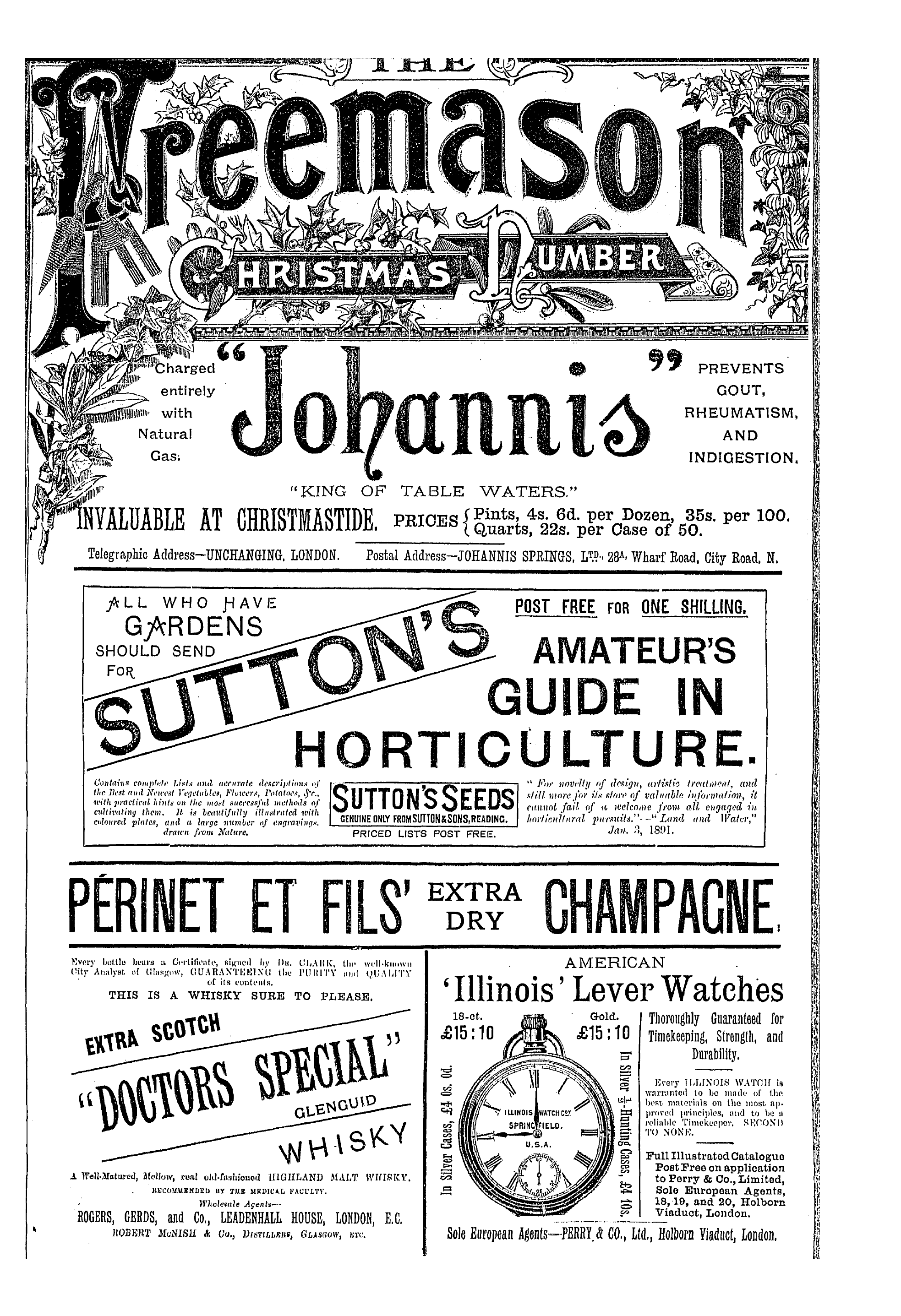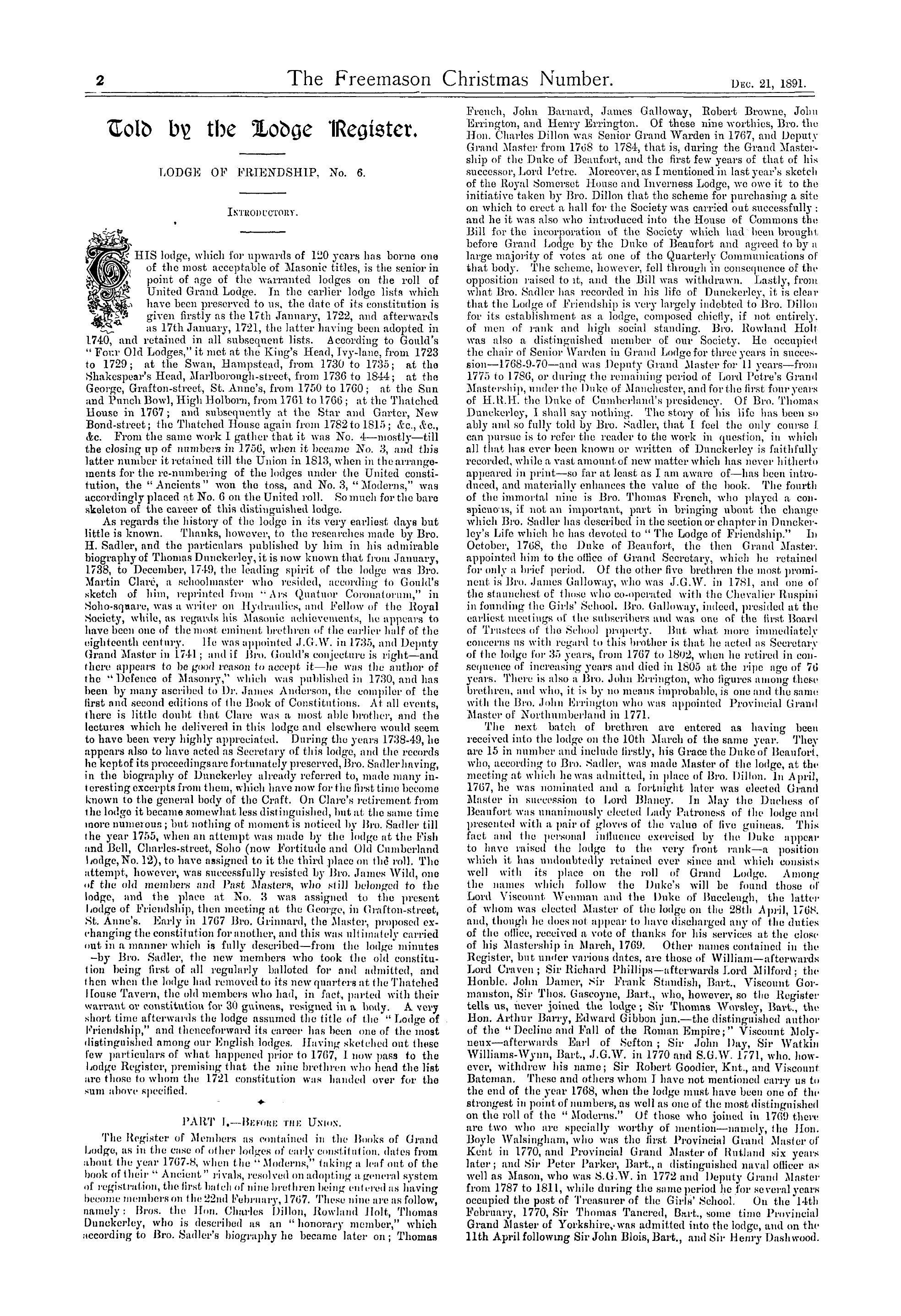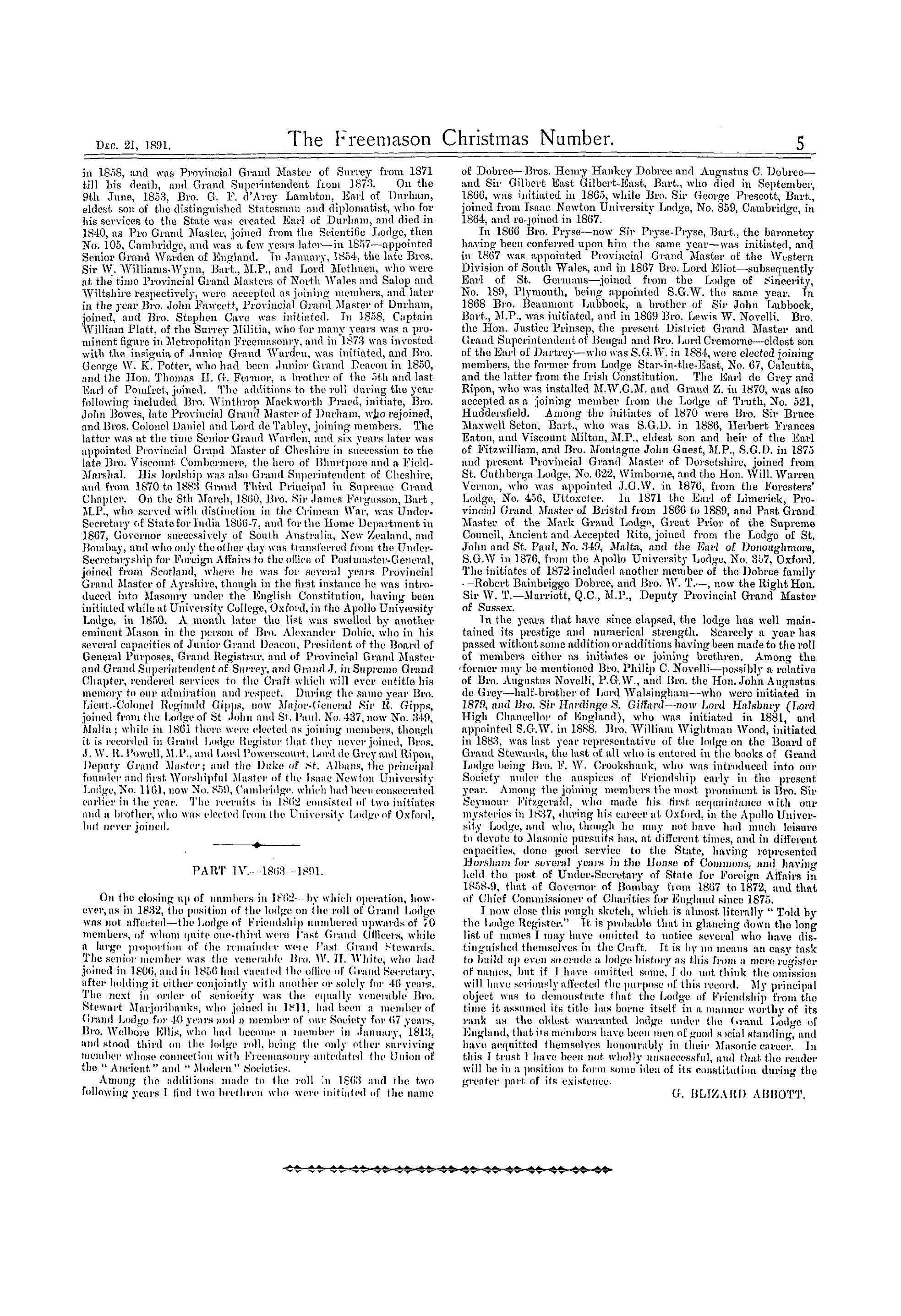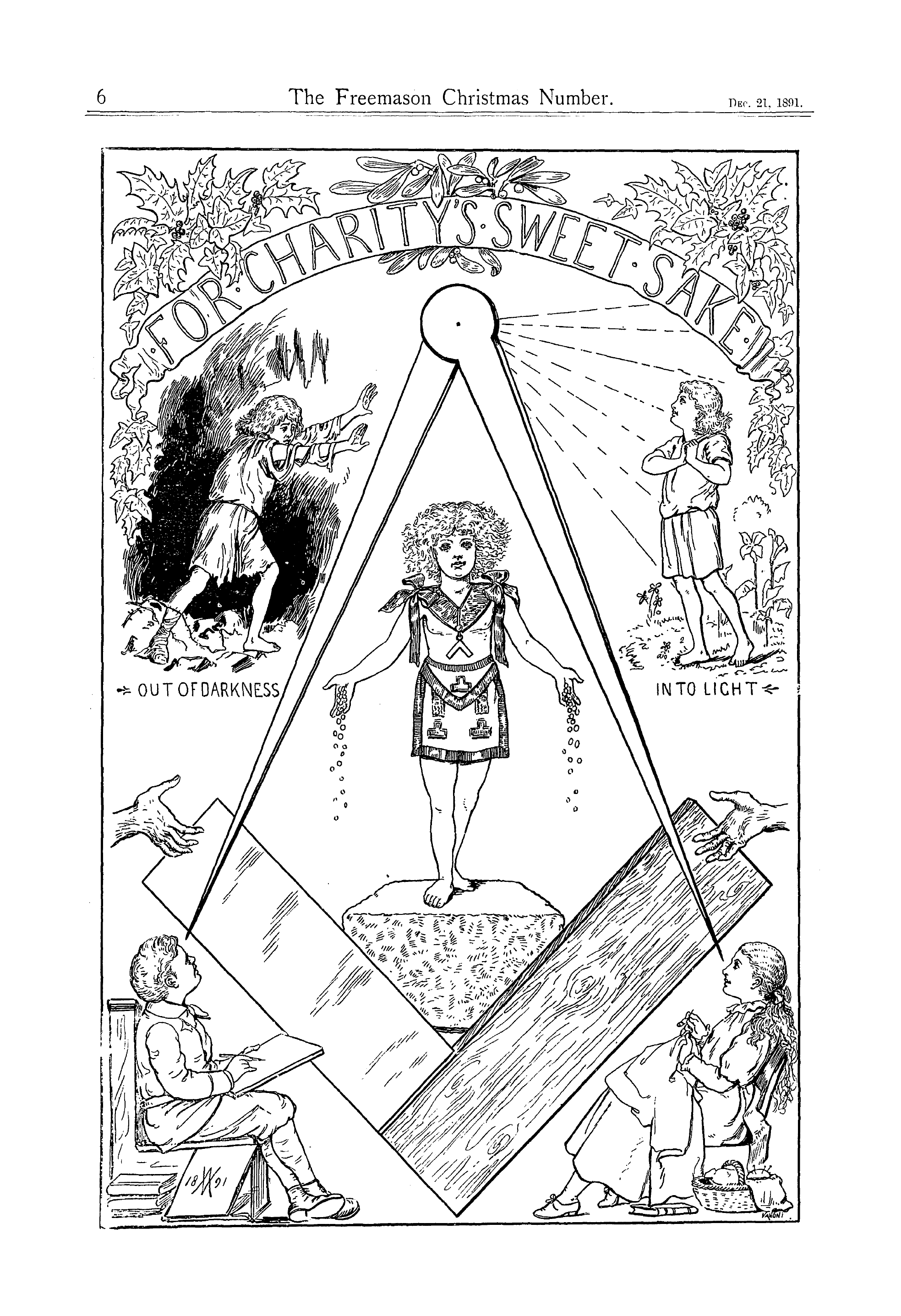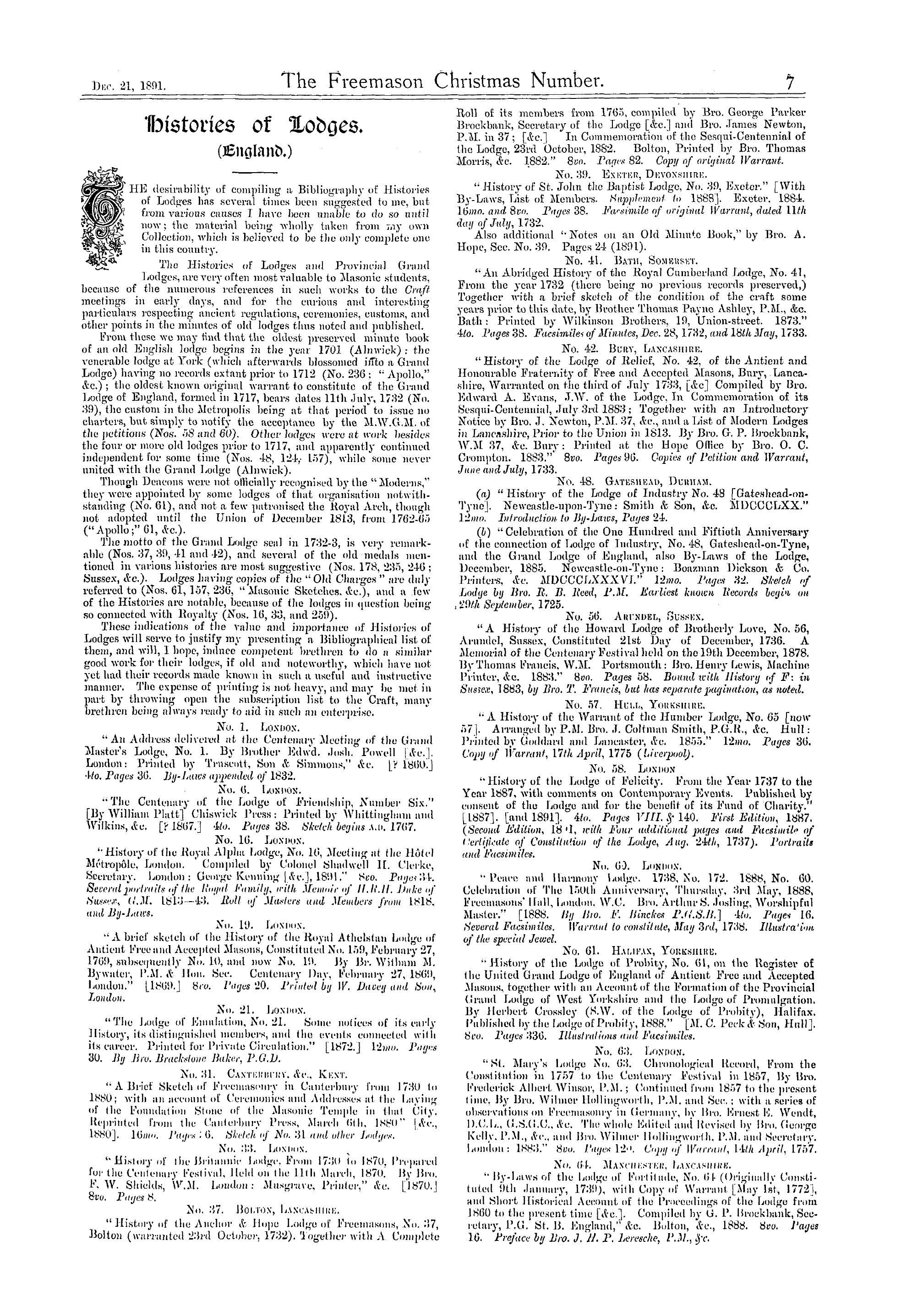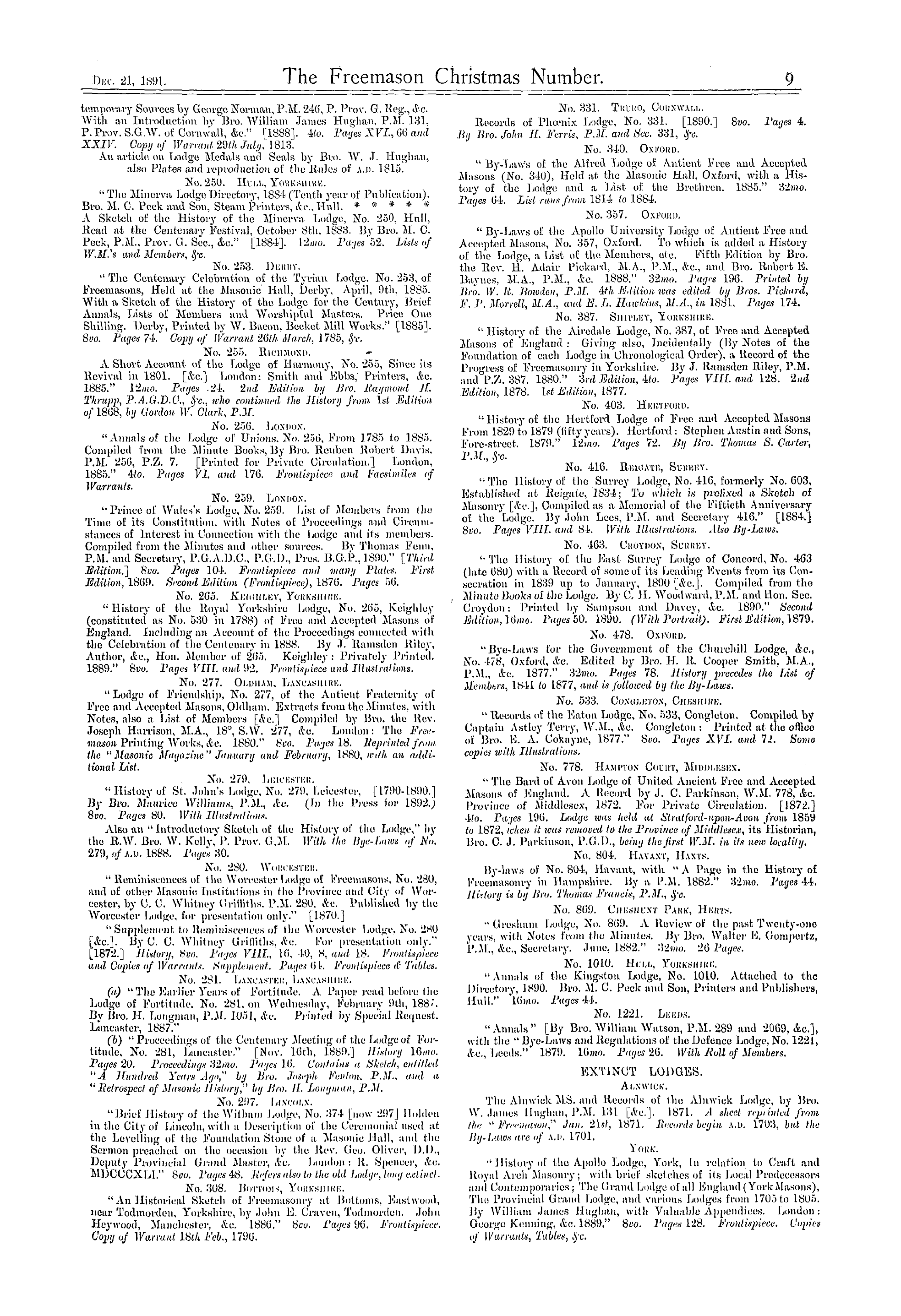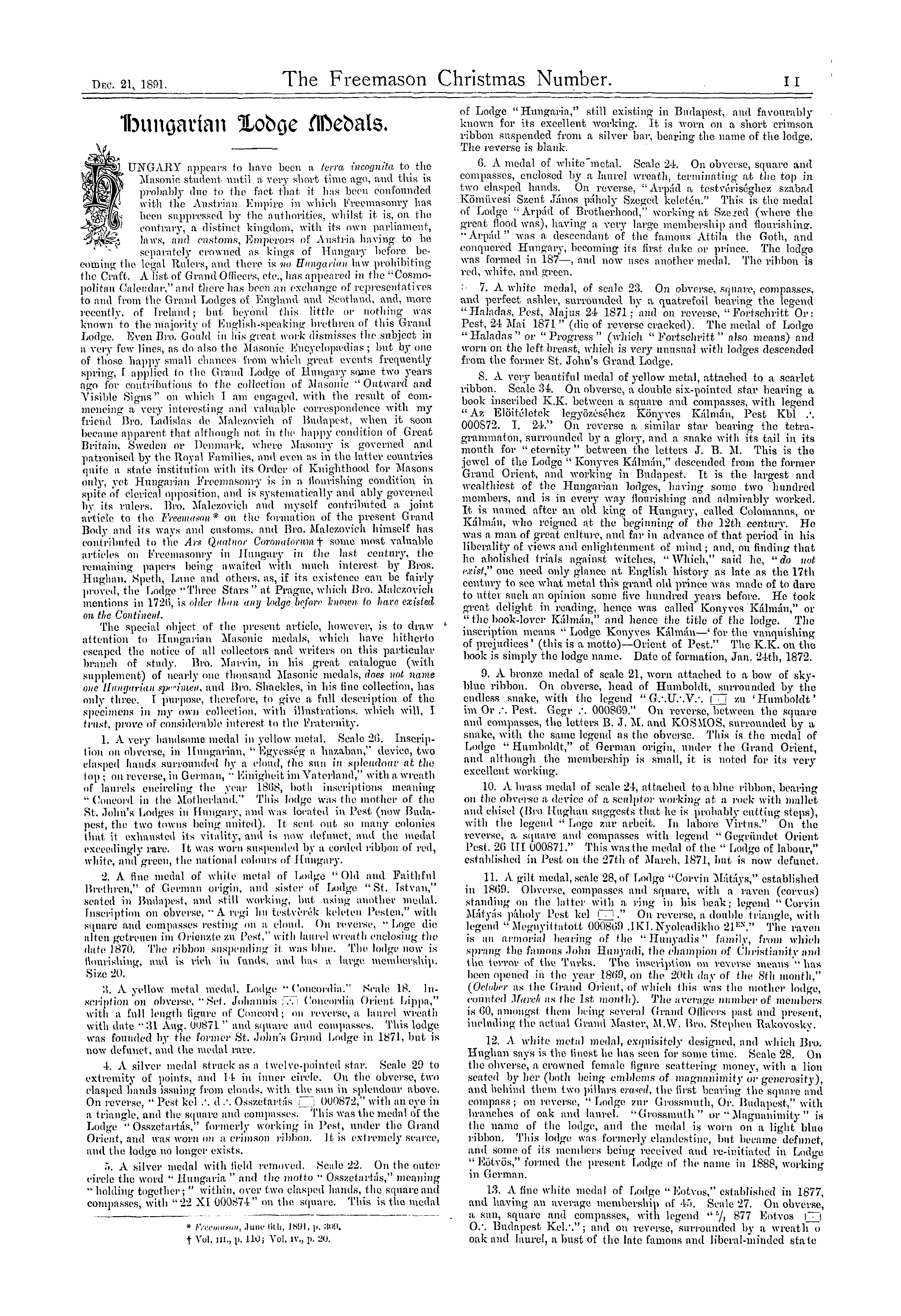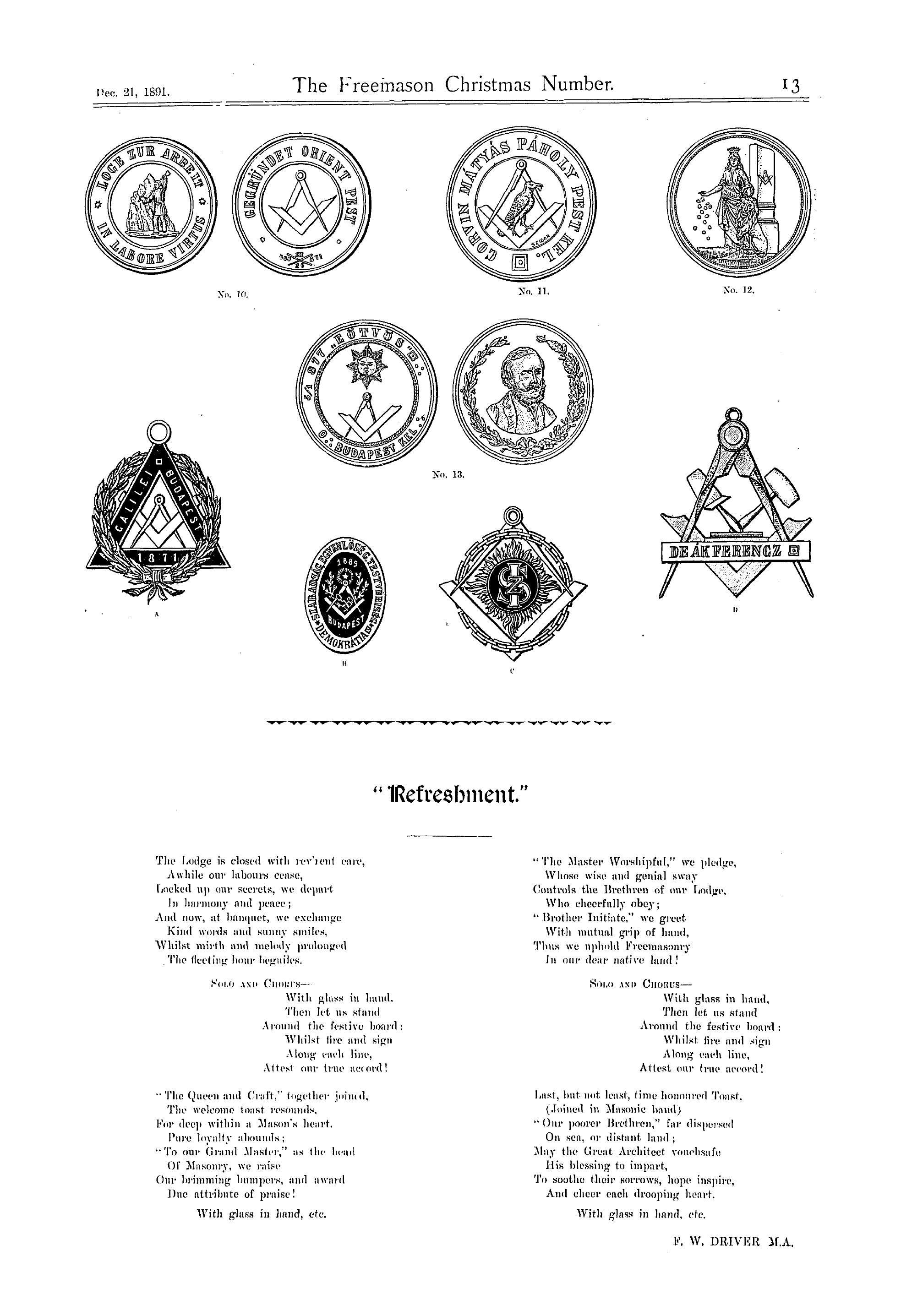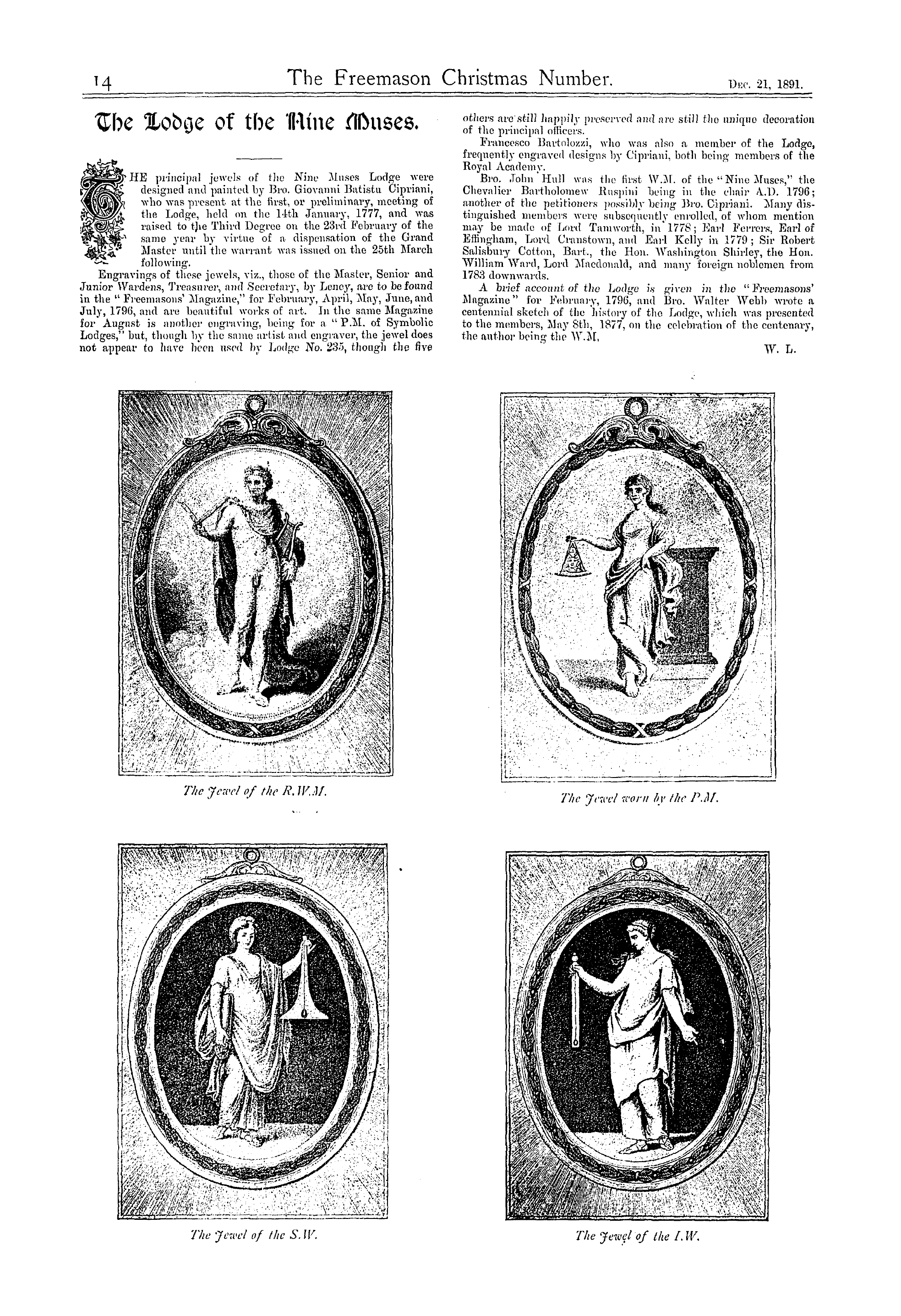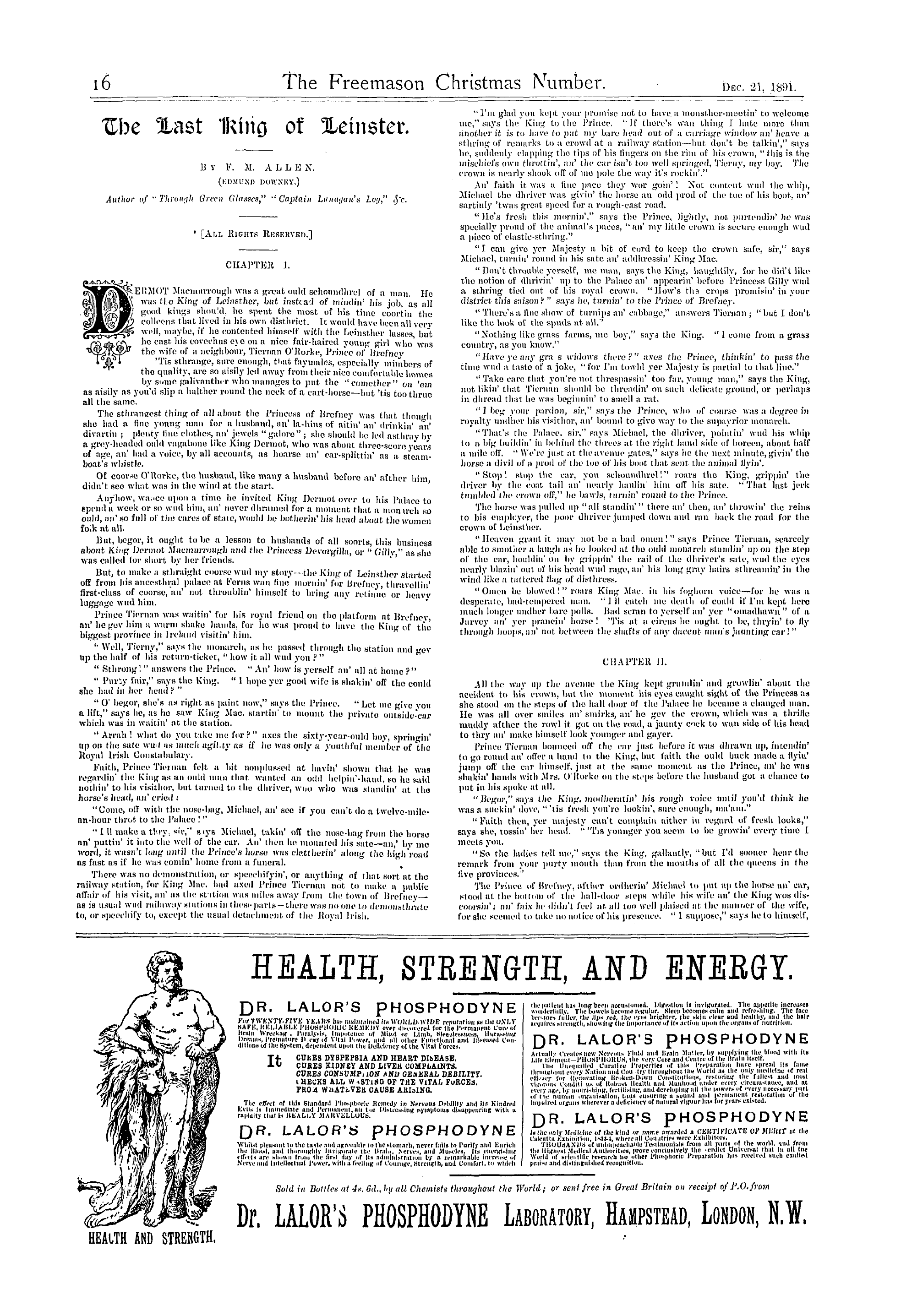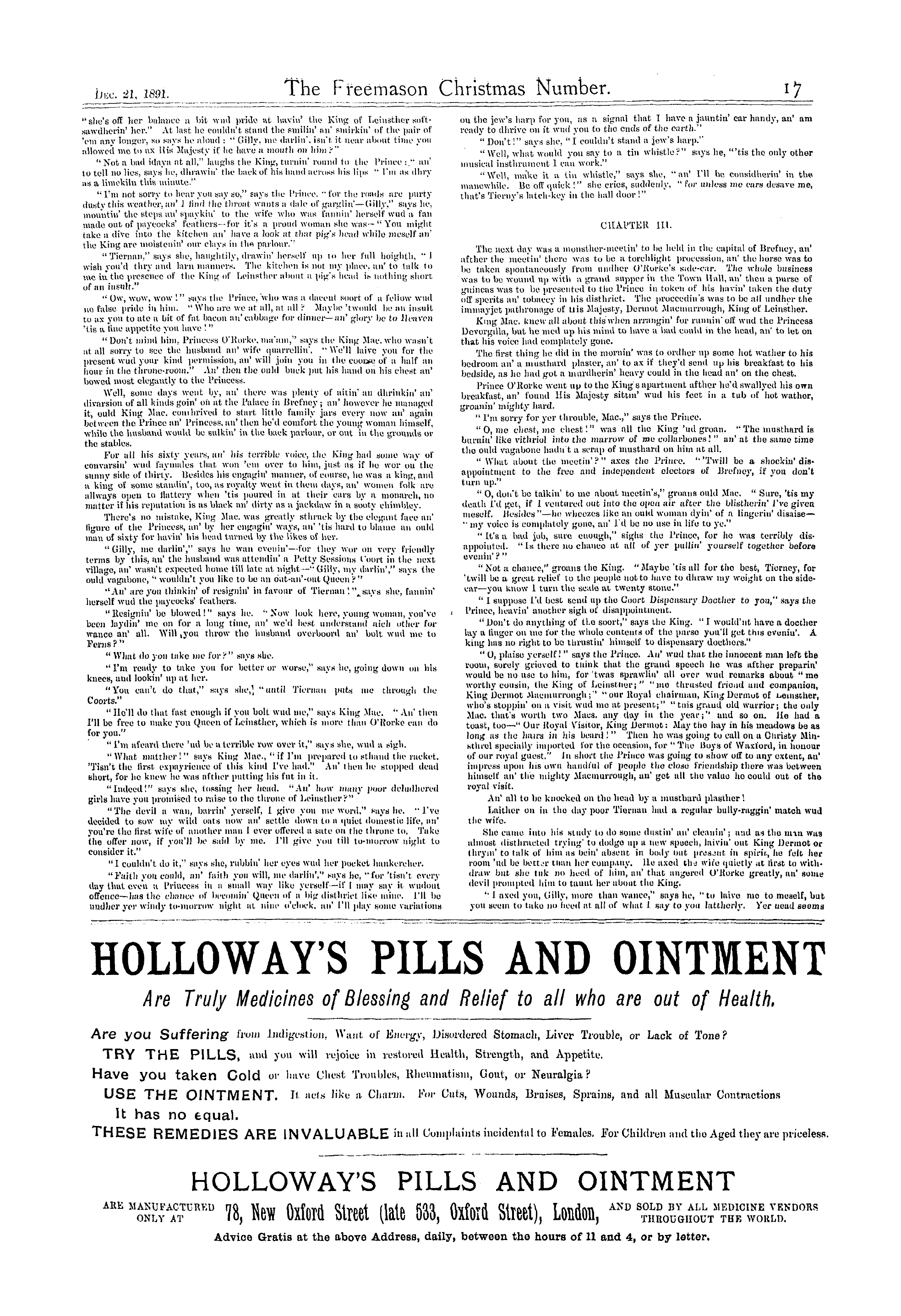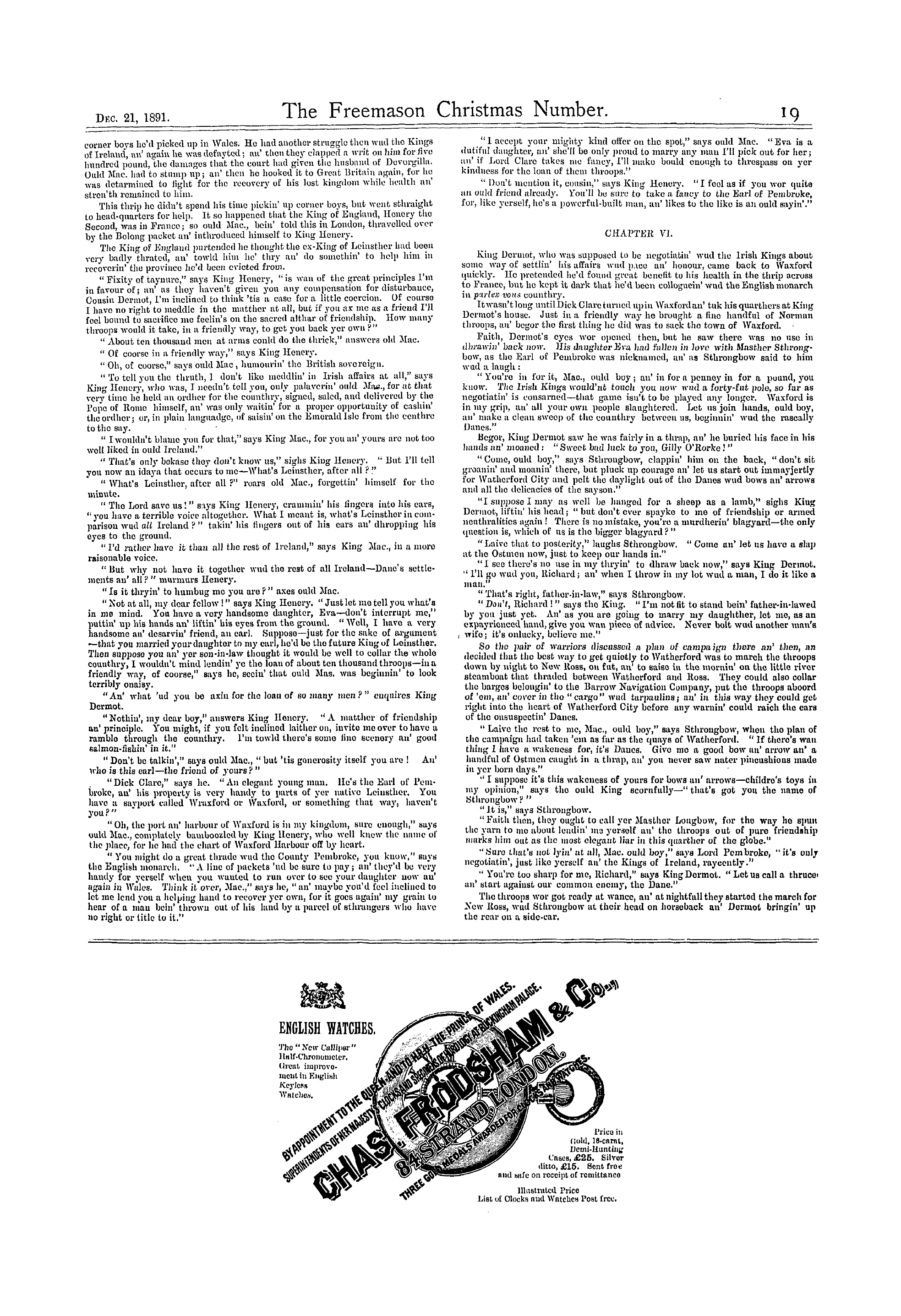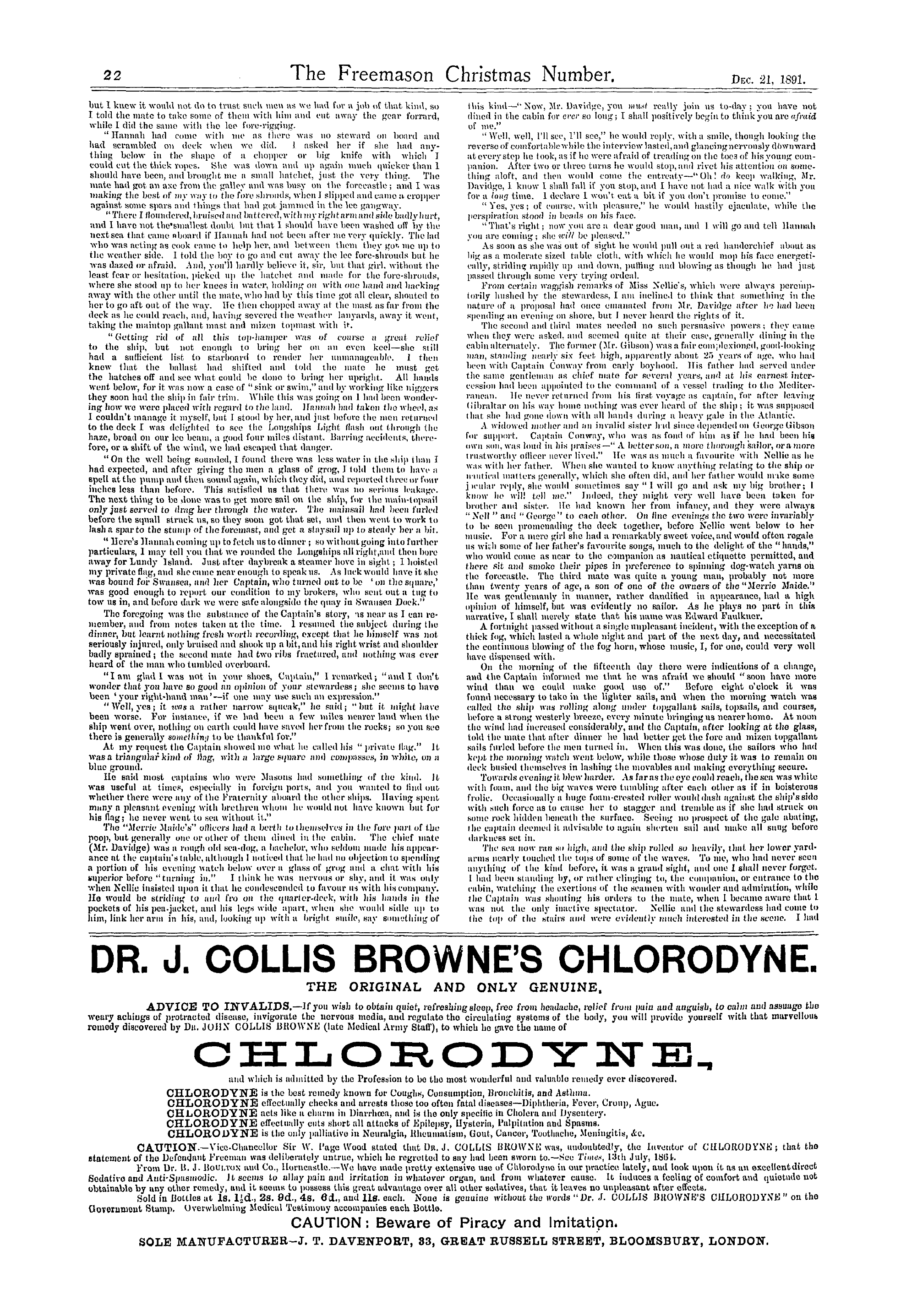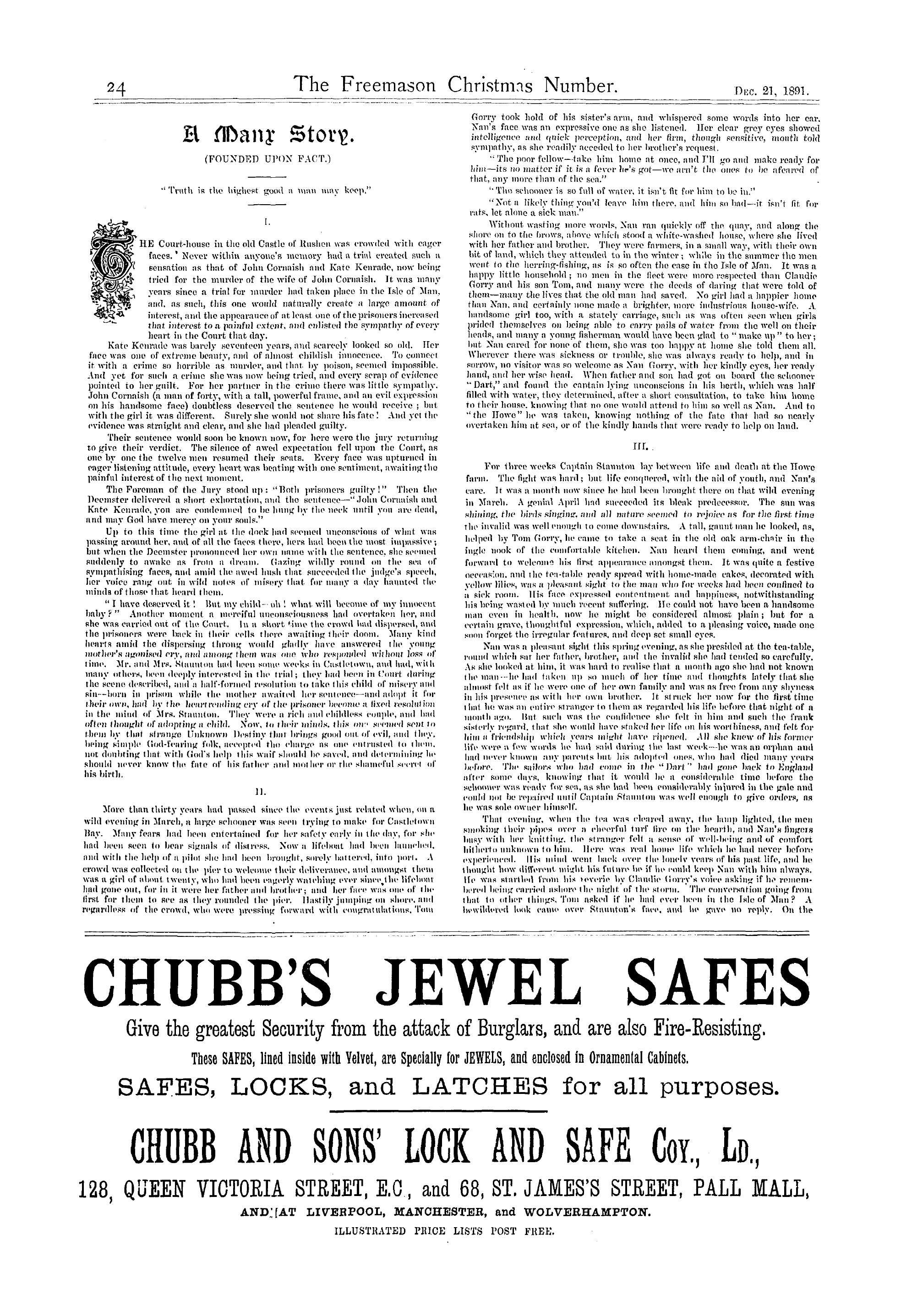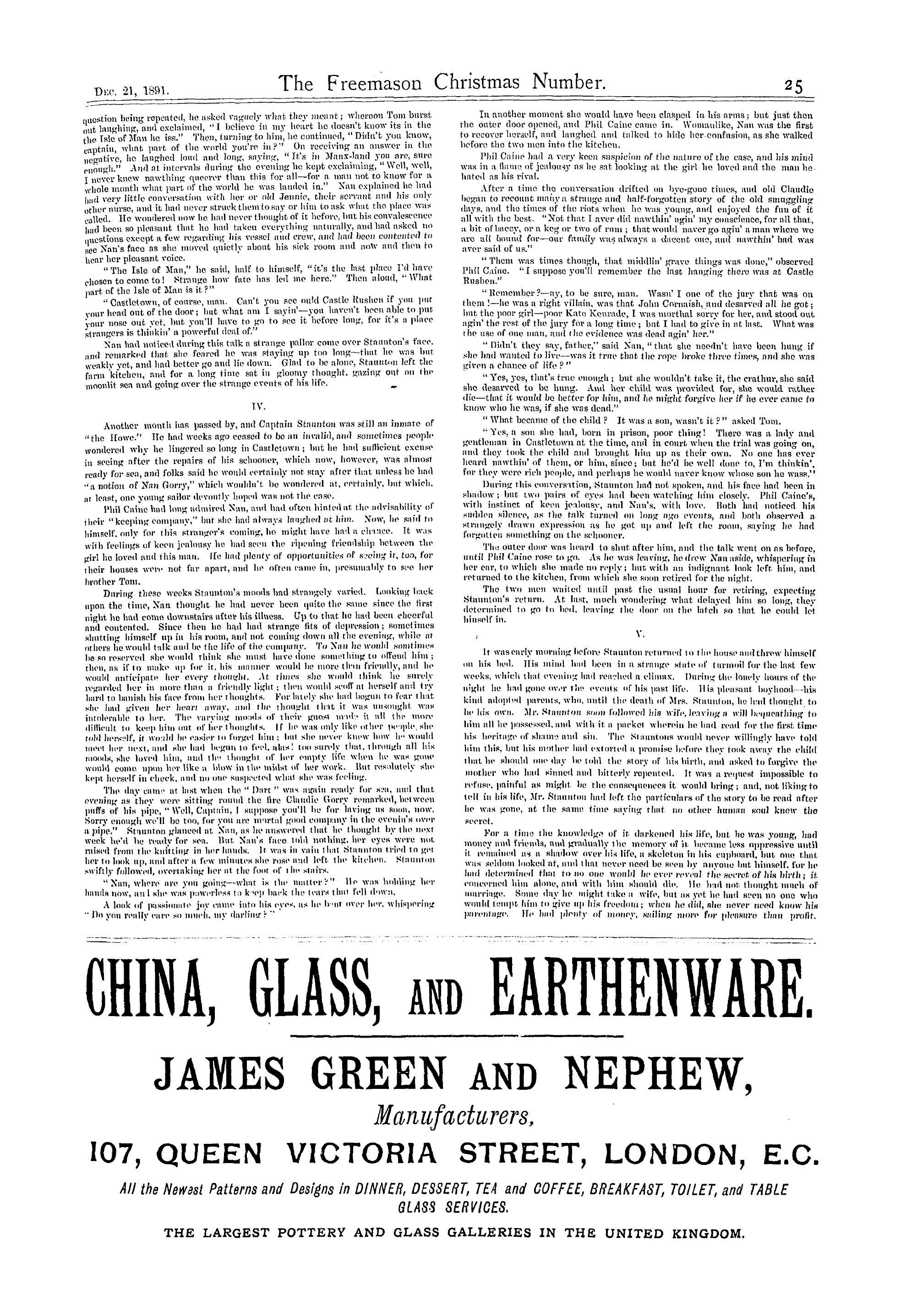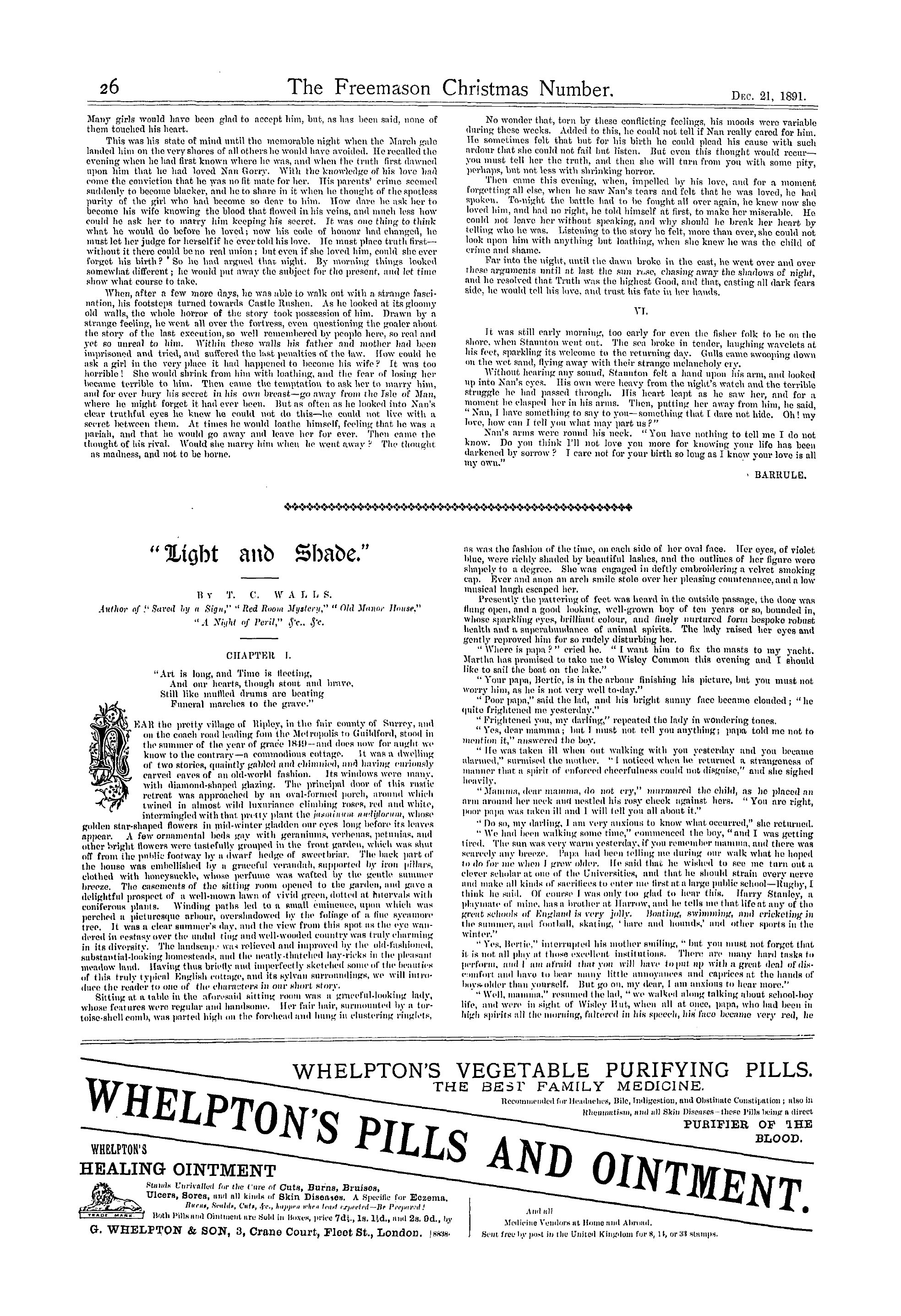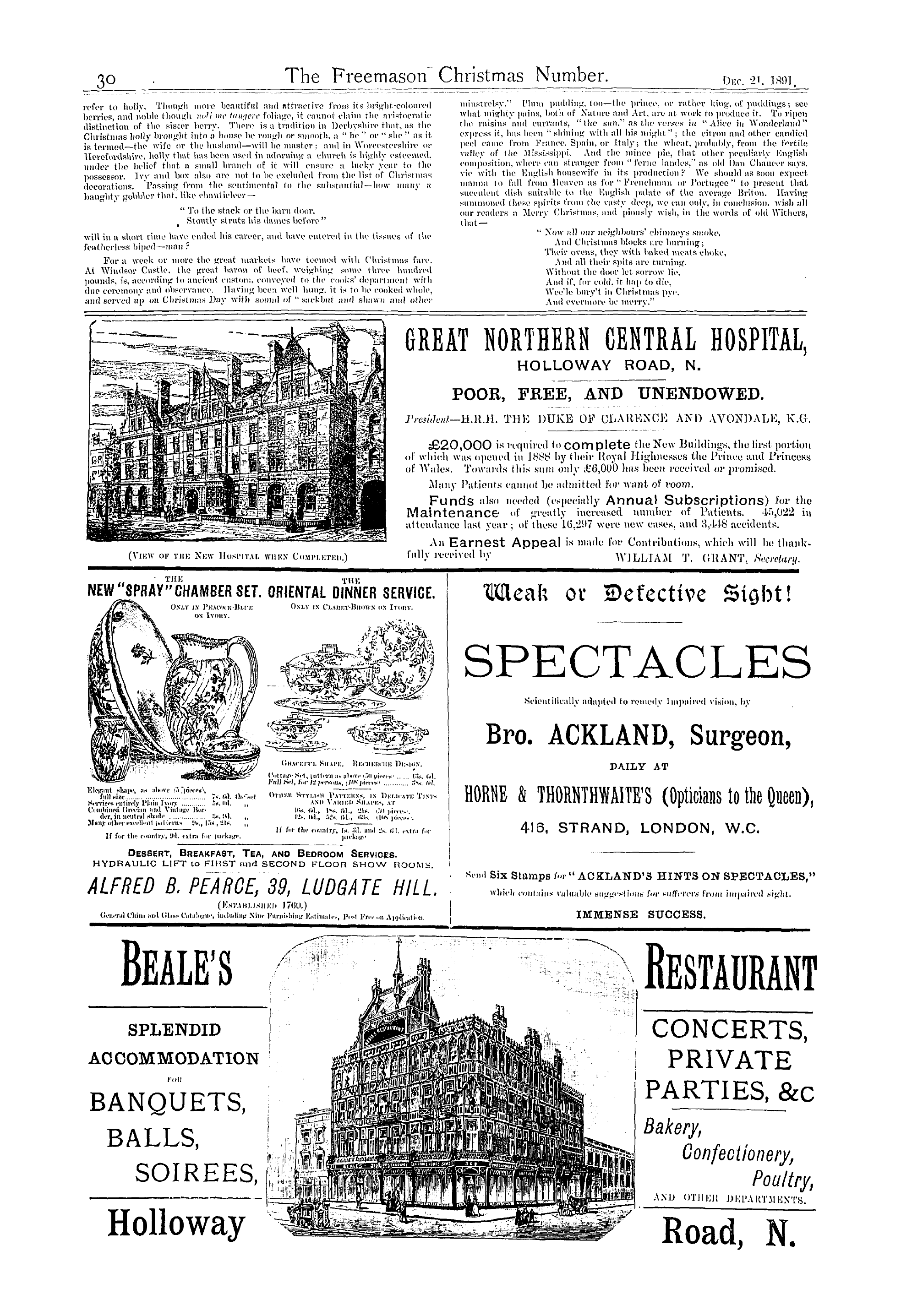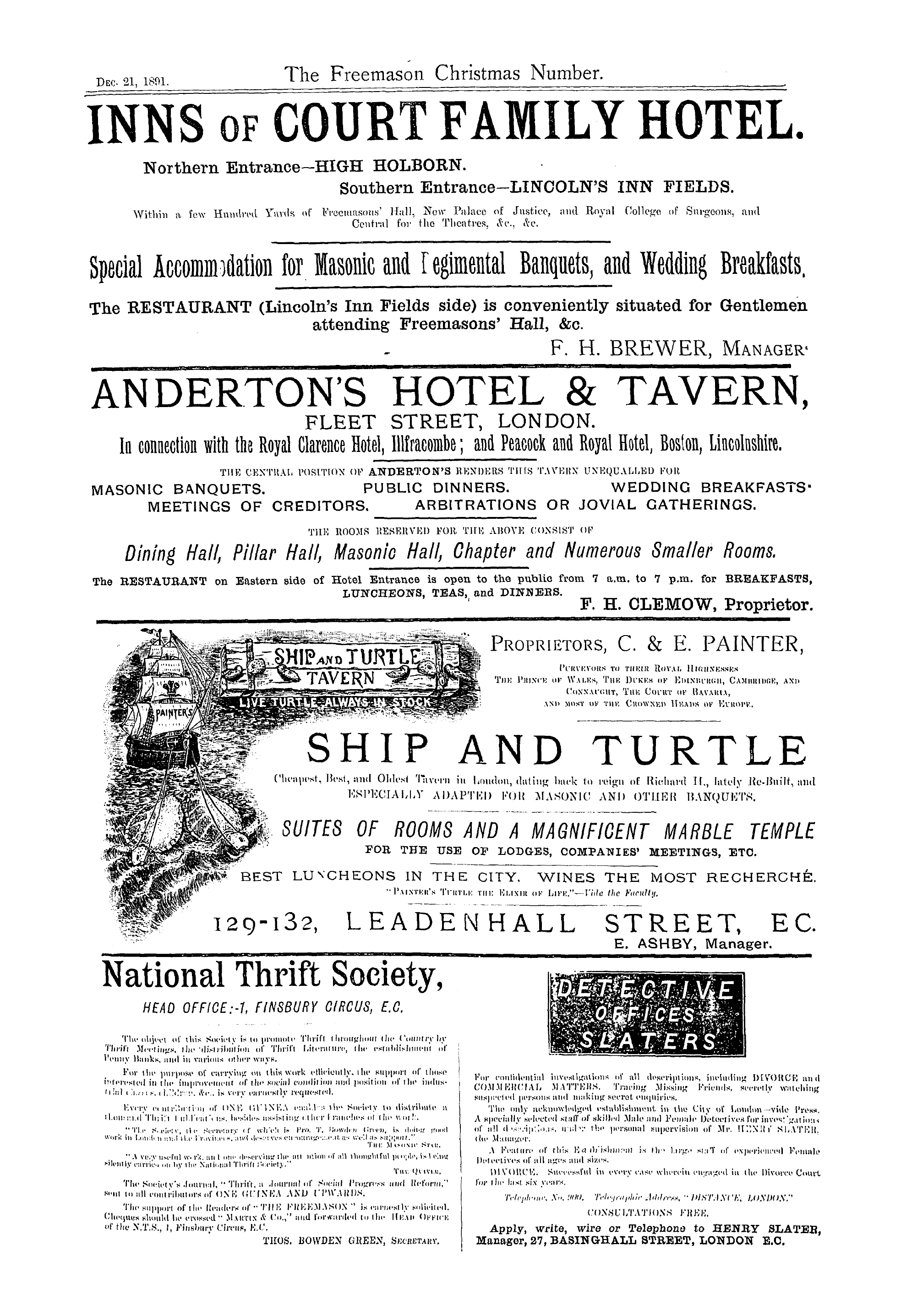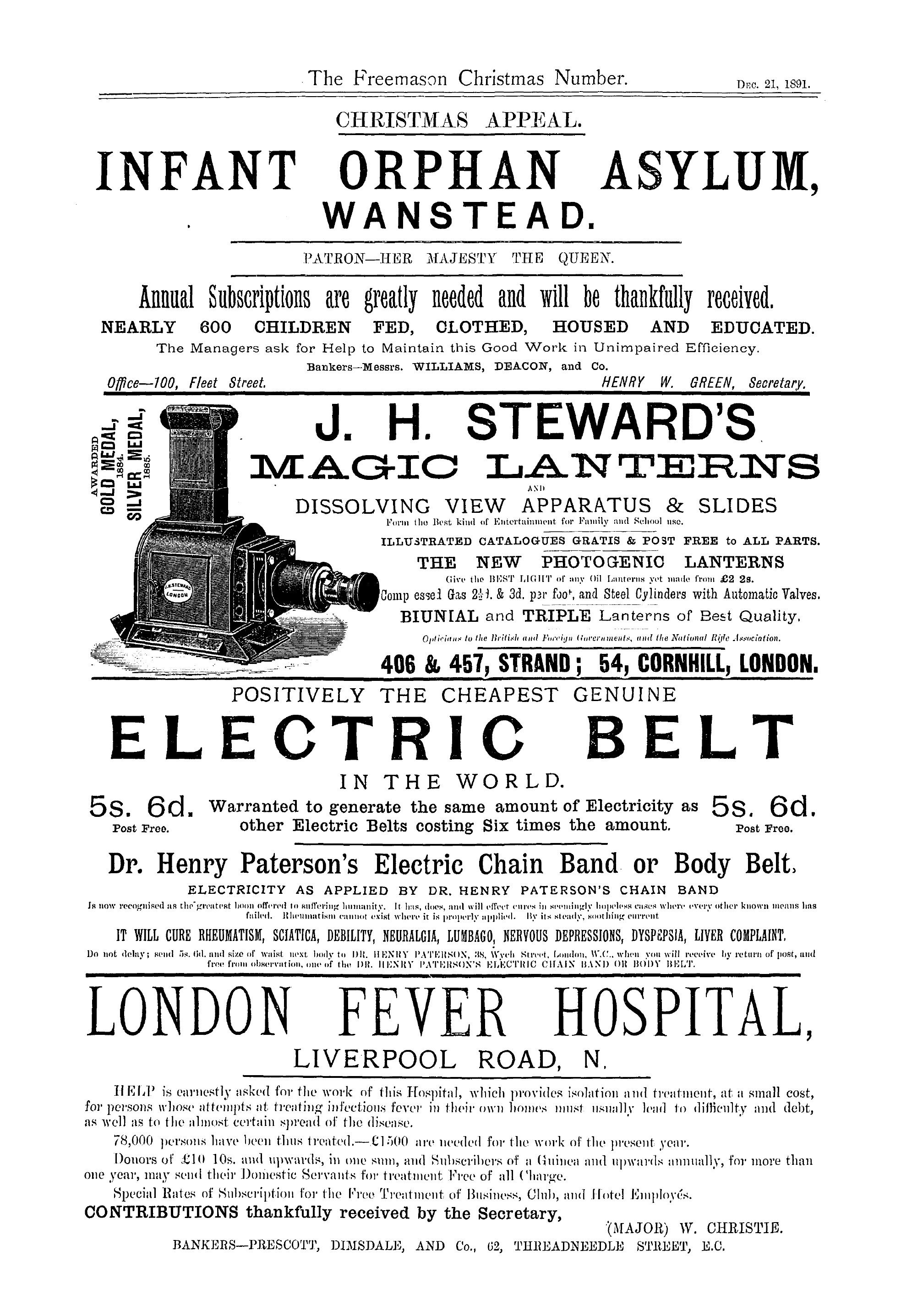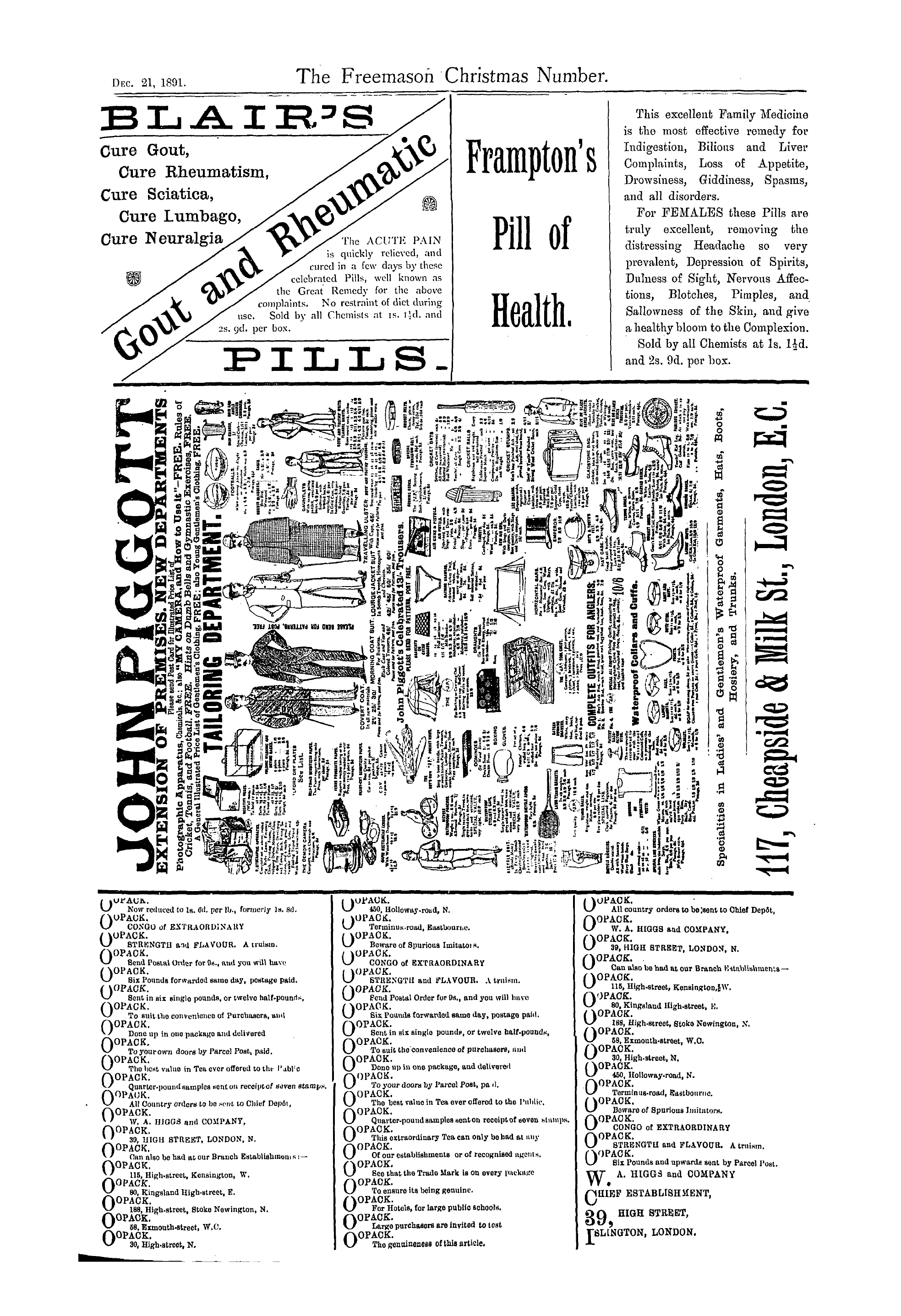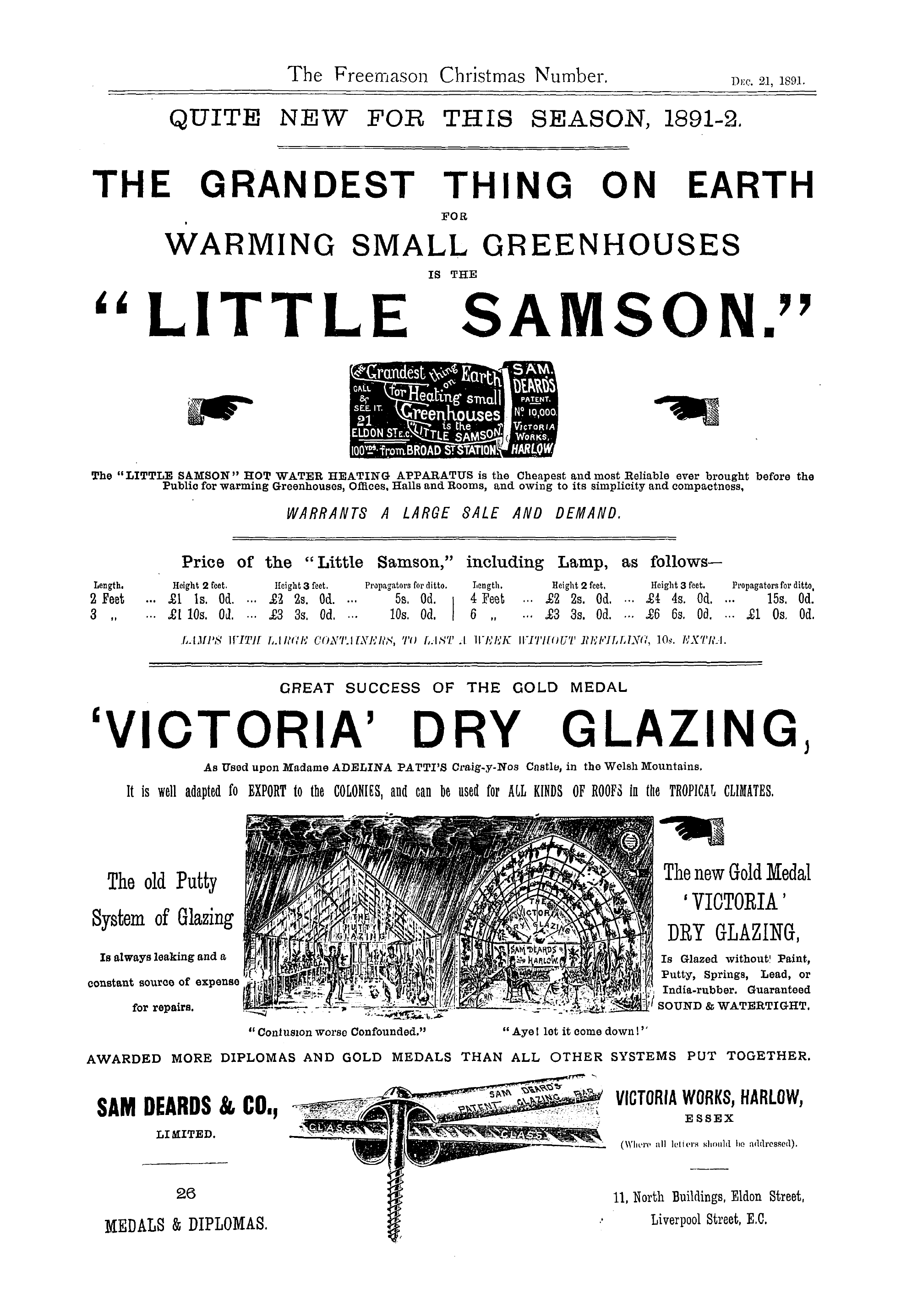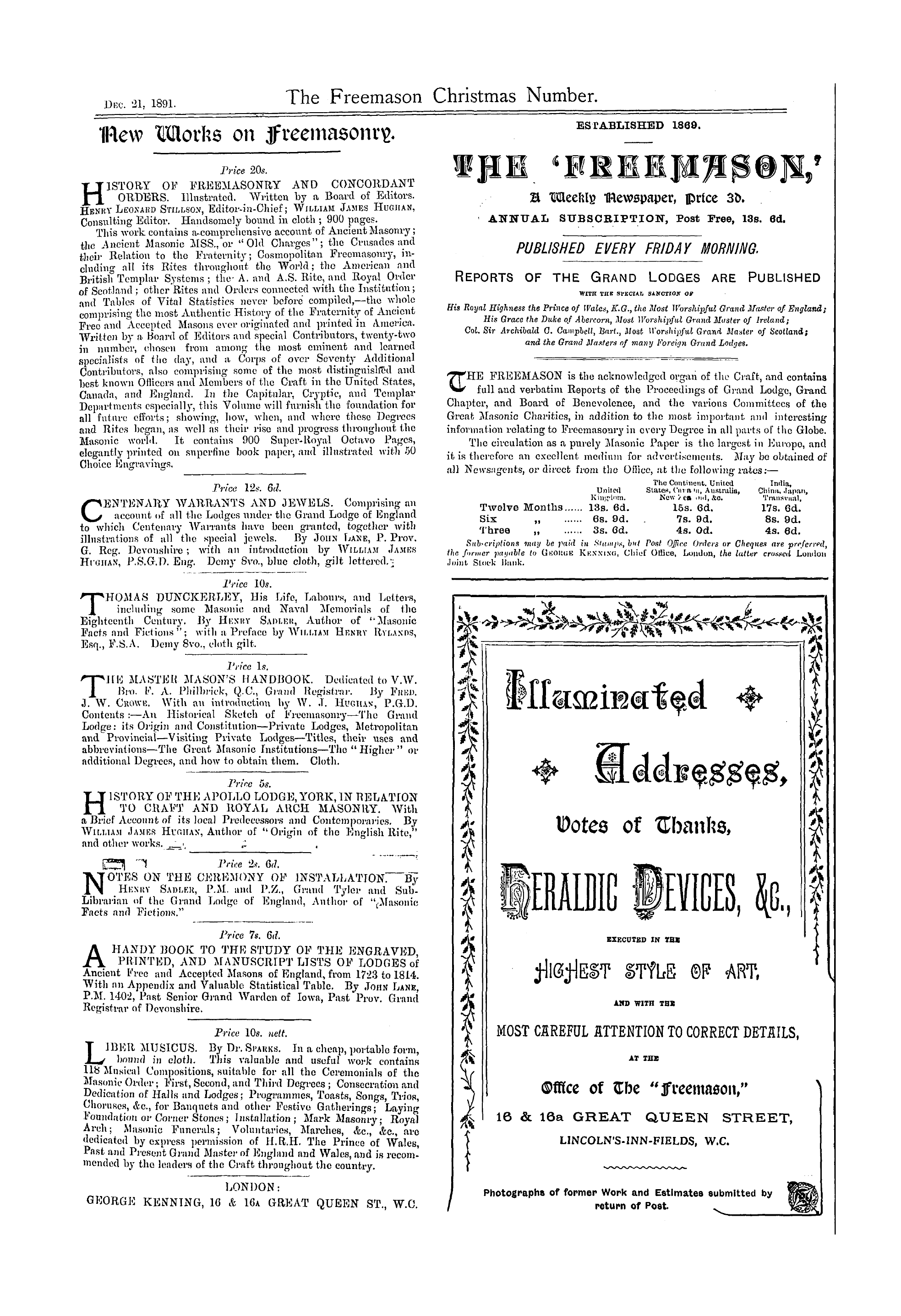-
Articles/Ads
Article Told by the Lodge Register. Page 1 of 4 Article Told by the Lodge Register. Page 1 of 4 →
Note: This text has been automatically extracted via Optical Character Recognition (OCR) software.
Told By The Lodge Register.
Told by the Lodge Register .
LODGE OF FRIENDSHIP , No . 6 .
IrNTltODt'CTOKY . HIS lodge , which i ' or upwards of 120 years lias borne one of the most acceptable of Masonic titles , is the senior in point of age of the warranted lodges on the roll of United Grand Lodge . In the earlier lodge lists which
have been preserved to us , the date of its constitution is given firstly as the 17 th January , 1722 , and afterwards _ . as 17 th January , 1721 , the latter having been adopted in w > i 8 ir' ' lave been preserved to us , the date of its constitution is ifeS > Ji given firstly as the 17 th January , 1722 , and afterwards ^* So . as 17 th January , 1721 , the latter having been adopted in
1740 , and retained in all subsequent lists . According to Gould ' s " Four Old Lodges , " it met at the King ' s Head , Ivy-lane , from 1723 to 1729 ; at the Swan , Hampstead , from 1730 to 1735 ; at tho Shakespear ' s Head , Marlborough-street , from 1736 to 1 S 44 ; at the George , Grafton-street , St . Anne ' s , from 1750 to 17 C 0 ; at the Sun and Punch Bowl , High Holborn , from 1761 to 1766 ; at the Thatched House in 1767 ; and subsequently at the Star and Garter , New
Bond-street ; the 1 hatched House again from 1 / 82 to 1815 ; etc ., & c , & c . From the same work I gather that it was No . 4—mostly—till the closing up of numbers in 1756 , when it became No . 3 , and this latter number it retained till the Union in 1813 , when in the
arrangements for the re-numbering of the lodges under the United constitution , the " Ancients " won the toss , and No . 3 , " Moderns , " was accordingly placed at No . 6 on the United roll . So much for the bare skeleton of the career of this distinguished lodge .
As regards the history of the lodge in its very earliest days but little is known . Thanks , however , to the researches made b y Bro . H . Sadler , and the particulars published by him in his admirable biography of Thomas Duuckerley , it is now known that from January , 1 . 738 , to December , 1749 , the leading spirit of the lodge was Bro .
Martin Clare , a schoolmaster who resided , according to Gould's sketch of him , reprinted from ' Ars Quatuor Coroiiatoriim , " in Soho-sqnare , was a writer on H ydraulics , and Fellow of the ltoyal Society , while , as regards his Masonic achievements , he appears to have been one of the most eminent brethren of the earlier half of the
eighteenth century . He was appointed J . G . W . in 1735 , and Deputy Grand Master in 1741 ; and if Bro . Gould ' s conjecture is ri ght—and there appears to be good reason to accept it—he was the author of the "Defence of Masonry , " which was published in 1730 , and has been by many ascribed to Dr . James Anderson , the compiler of the
first and second editions of Ihe Book of Constitutions . At all events , there is little doubt that Clare was a most able brother , and the lectures which he delivered in this lodge and elsewhere would seem to have been very highly appreciated . During the years 1738-49 , he appears also to have acted as Secretary of this lodge , and the records
lie keptof its proceedings are fortunately preserved , Bro . Sadlerhaving , in the biography of Duuckerley already referred to , made many int cresting excerpts from them , which have now for the first time become known to the general bod y of the Craft . On Clare ' s retirement from the lodge it became somewhat less distinguished , but at tlie same time
more numerous ; but nothing of moment is noticed b y Bro . Sadler till the year 1755 , when an attempt was made by the lodge at the Fish and Bell , Charles-street , Soho ( now Fortitude and Old Cumberland Lodge , No . 12 ) , to have assigned to it the third place on the roll . The attempt , however , was successfully resisted by Bro . James Wild , one
of the old members and Past Masters , who still belonged to the lodge , and the place at No . ' A was assigned to the present Lodge of Friendship , then meeting at the George , in Grafton-street , St . Anne ' s . Early in 1767 Bro . Grinnard , the Master , proposed exchanging the constitution for another , and this was ultimately carried
out in a manner which is fully described—from the lodge minutes -b y Bro . Sadler , the new members who took the old constitution being first of all regularly balloted for and admitted , and then when the lodge had removed to its new quarters at the Thatched I [ ouse Tavern , the old members who had , in fact , parted with their
warrant or constitution for 30 guineas , resigned in a body . A very short time afterwards the lodge assumed the title of the " Lodge of Friendship , " and thenceforward its career has been one of the most distinguished among our English lodges . Having sketched out these
few particulars of what happened prior to 1767 , I now pass to the Lodge Register , premising that the nine brethren who head the list are those to whom the 1721 constitution was handed over for tho sum above specified .
PART I . —Ki ' rmu : THI : UXK . X . The Register of Members as contained in the Hooks of Grand Lodge , as in the case of other lodges of earl y constitution , dates from about the year 1767-8 , when tlie " Moderns , ' " taking a leaf out of the book of their " Ancient" rivals , resolved on adopting a general system
of registration , the first hatch of nine brethren being entered as having become members on the 22 nd February , 1767 . These nine are as follow , namely : Bros , the Hon . Charles Dillon , Rowland Holt , Thomas Dunckerley , who is described as an "honorary member , " which according to Bro . Sadler ' s biography he became later on ; Thomas
Told By The Lodge Register.
French , John Barnard , James Galloway , Robert Browne , John Errington , and Henry Errington . Of these nine worthies , Bro . the Hon . Charles Dillon was Senior Grand Warden in 1767 , and Deputy Grand Master from 17 o 8 to 17 S 4 , that is , during the Grand Mastership of the Dnke of Beaufort , and the first few years of that of his successor , Lord Petrc . Moreover , as I mentioned in last year ' s sketch
of the Royal Somerset House and Inverness Lodge , we owe it to the initiative taken by Bro . Dillon that the scheme for purchasing a site on which to erect a hall for the Society was carried out successfully : and he it was also who introduced into the House of Commons the Bill for the incorporation of thc Society which had "been brought before Grand Lodge by thc Duke of Beaufort and agreed to by a
large majority of votes at one of the Quarterly Communications of that body . The scheme , however , fell through in consequence of the opposition raised to it , and the Bill was withdrawn . Lastly , from what Bro . Sadler has recorded in his life of Dunckerley , it is clear that thc Lodge of Friendship is very largely indebted to Bro . Dillon for its establishment as a lodge , composed chiefly , if not entirely .
of men of rank and high social standing . Bro . Rowland Holt was also a distinguished member of our Society . He occupied the chair of Senior Warden in Grand Lodge for three years in succession—1768-9-70—and was Deputy Grand Master for 11 years—from 1775 to 17 S 6 , or during the remaining period of Lord Petre ' s Grand Mastership , under the Duke of Manchester , and for the first four years
of H . R . H . thc Duke of Cumberland's presidency . Of Bro . Thomas Dunckerley , I shall say nothing . The story of his life lias been so ably and so fully told by Bro . Sadler , that I feel the only course I can pursue is to refer the reader to the work in question , in which all that has ever been known or written of Dunckerley is faithfully recorded , while a vast amount of new matter which has never hitherto
appeared m print—so tar at least as I am aware of—has been introduced , and materially enhances the value of the book . The fourth of the immortal nine is Bro . Thomas French , who played a conspicuous , if not an important , part in bringing nbout tho change which Bro . Sadler has described in the section or chapter in Dnnckerley ' s Life which he has devoted to " The Lodge of Friendship . " In
October , 1768 , the Duke of Beaufort , the then Grand Master , appointed him to the office of Grand Secretary , which he retained for only a brief period . Of the other five brethren the most prominent is Bro . James Galloway , who was J . G . W . in 1781 , and one of the staunchest of those who co-operated with the Chevalier Ruspini in founding the Girls' School . Bro . Galloway , indeed , presided at the earliest meetings of the subscribers and was one of the first Board
of Trustees of tho School property . But what more immediately concerns us with regard to this brother is that he acted us Secretary of the lodge for 35 years , from 1767 to 1802 , when he retired in consequence of increasing years and died in 1805 at the ripe age of 76 years . There is also a Bro . John Errington , who figures among these brethren , and who , it is b y no means improbable , is one and the same with the Bro . John Errington who was appointed Provincial Grand Master of Northumberland in 1771 .
ihe next batch of brethren are entered as having been received into the lodge on the 10 th March of the same year . They are 15 in number and include firstly , his Grace the Duke of Beaufort , who , according to Bro . Sadler , was made Master of the lodge , at the meeting at which he was admitted , in place of Bro . Dillon . In April , 1767 , he was nominated and a fortnight later was elected Grand
Master m succession to Lord Blaney . In May the Duchess of Beaufort was unanimously elected Lady Patroness of the lodge and presented with a pair of gloves of the value of five guineas . This fact and the personal influence exercised b y the Duke appear to have raised the lodge to the very front rank—a position which it has undoubtedly retained ever since and which consists
well with its place on the roll of Grand Lodge . Among the names which follow the Duke ' s will be found those of Lord Viscount Wenman and the Dnke of Buccleugh , the latter of whom was elected Master of the lodge on the 28 th April , 1768 . and , though he does not appear to have discharged any of the duties of the oflice , received a vote of thanks for his services at the close
of his Mastership in March , 1769 . Other names contained in the Register , but uiuter various dates , are those of William—afterwards Lord Craven ; Sir Richard Phillips—afterwards Lord Milford ; the Honblc . John Darner , Sir Frank Standish , Bart ., Viscount Gormaiiston , Sir Thos . Gascoyne , Bart ., who , however , so the Register tells us , never joined the lodge ; Sir Thomas Wovsley , Bavt ., the
Hon . Arthur Barry , Edward Gibbon jun . —the distinguished author of the "Decline and Fall of the Roman Empire ; " Viscount Molyneux—afterwards Earl of Sefton ; Sir John Day , Sir Watkin Williams-Wynn , Bart ., J . G . AV . in 1770 and S . G . W . 1771 , who . however , withdrew his name ; Sir Robert Goodier , Knt ., and Viscount Bateman . These and others whom I have not mentioned carry us to
the end of the year 1768 , when tlie lodge must have been one of the strongest in point of numbers , as well as one of the most distinguished on the roll of the " Moderns . " Of those who joined in 1769 there are two who are specially worthy of mention—namely , the Hon . Boyle Walsingham , who was the first Provincial Grand Master of Kent in 1770 , and Provincial Grand Master of Rutland six years
later ; and Sir Peter Parker , Bart ., a distinguished naval officer as well as Mason , who was S . G . W . in 1772 and Deputy Grand Master from 1787 to 1811 , while during the same period he for several years occupied the post of Treasurer of the Girls' School . On the 14 th February , 1770 , Sir Thomas Tancred , Bart ., some time Provincial Grand Master of Yorkshire ,-was admitted into the lodge , and on the llth April following Sir John Blois , Bart ., and Sir Henry Dash wood .
Note: This text has been automatically extracted via Optical Character Recognition (OCR) software.
Told By The Lodge Register.
Told by the Lodge Register .
LODGE OF FRIENDSHIP , No . 6 .
IrNTltODt'CTOKY . HIS lodge , which i ' or upwards of 120 years lias borne one of the most acceptable of Masonic titles , is the senior in point of age of the warranted lodges on the roll of United Grand Lodge . In the earlier lodge lists which
have been preserved to us , the date of its constitution is given firstly as the 17 th January , 1722 , and afterwards _ . as 17 th January , 1721 , the latter having been adopted in w > i 8 ir' ' lave been preserved to us , the date of its constitution is ifeS > Ji given firstly as the 17 th January , 1722 , and afterwards ^* So . as 17 th January , 1721 , the latter having been adopted in
1740 , and retained in all subsequent lists . According to Gould ' s " Four Old Lodges , " it met at the King ' s Head , Ivy-lane , from 1723 to 1729 ; at the Swan , Hampstead , from 1730 to 1735 ; at tho Shakespear ' s Head , Marlborough-street , from 1736 to 1 S 44 ; at the George , Grafton-street , St . Anne ' s , from 1750 to 17 C 0 ; at the Sun and Punch Bowl , High Holborn , from 1761 to 1766 ; at the Thatched House in 1767 ; and subsequently at the Star and Garter , New
Bond-street ; the 1 hatched House again from 1 / 82 to 1815 ; etc ., & c , & c . From the same work I gather that it was No . 4—mostly—till the closing up of numbers in 1756 , when it became No . 3 , and this latter number it retained till the Union in 1813 , when in the
arrangements for the re-numbering of the lodges under the United constitution , the " Ancients " won the toss , and No . 3 , " Moderns , " was accordingly placed at No . 6 on the United roll . So much for the bare skeleton of the career of this distinguished lodge .
As regards the history of the lodge in its very earliest days but little is known . Thanks , however , to the researches made b y Bro . H . Sadler , and the particulars published by him in his admirable biography of Thomas Duuckerley , it is now known that from January , 1 . 738 , to December , 1749 , the leading spirit of the lodge was Bro .
Martin Clare , a schoolmaster who resided , according to Gould's sketch of him , reprinted from ' Ars Quatuor Coroiiatoriim , " in Soho-sqnare , was a writer on H ydraulics , and Fellow of the ltoyal Society , while , as regards his Masonic achievements , he appears to have been one of the most eminent brethren of the earlier half of the
eighteenth century . He was appointed J . G . W . in 1735 , and Deputy Grand Master in 1741 ; and if Bro . Gould ' s conjecture is ri ght—and there appears to be good reason to accept it—he was the author of the "Defence of Masonry , " which was published in 1730 , and has been by many ascribed to Dr . James Anderson , the compiler of the
first and second editions of Ihe Book of Constitutions . At all events , there is little doubt that Clare was a most able brother , and the lectures which he delivered in this lodge and elsewhere would seem to have been very highly appreciated . During the years 1738-49 , he appears also to have acted as Secretary of this lodge , and the records
lie keptof its proceedings are fortunately preserved , Bro . Sadlerhaving , in the biography of Duuckerley already referred to , made many int cresting excerpts from them , which have now for the first time become known to the general bod y of the Craft . On Clare ' s retirement from the lodge it became somewhat less distinguished , but at tlie same time
more numerous ; but nothing of moment is noticed b y Bro . Sadler till the year 1755 , when an attempt was made by the lodge at the Fish and Bell , Charles-street , Soho ( now Fortitude and Old Cumberland Lodge , No . 12 ) , to have assigned to it the third place on the roll . The attempt , however , was successfully resisted by Bro . James Wild , one
of the old members and Past Masters , who still belonged to the lodge , and the place at No . ' A was assigned to the present Lodge of Friendship , then meeting at the George , in Grafton-street , St . Anne ' s . Early in 1767 Bro . Grinnard , the Master , proposed exchanging the constitution for another , and this was ultimately carried
out in a manner which is fully described—from the lodge minutes -b y Bro . Sadler , the new members who took the old constitution being first of all regularly balloted for and admitted , and then when the lodge had removed to its new quarters at the Thatched I [ ouse Tavern , the old members who had , in fact , parted with their
warrant or constitution for 30 guineas , resigned in a body . A very short time afterwards the lodge assumed the title of the " Lodge of Friendship , " and thenceforward its career has been one of the most distinguished among our English lodges . Having sketched out these
few particulars of what happened prior to 1767 , I now pass to the Lodge Register , premising that the nine brethren who head the list are those to whom the 1721 constitution was handed over for tho sum above specified .
PART I . —Ki ' rmu : THI : UXK . X . The Register of Members as contained in the Hooks of Grand Lodge , as in the case of other lodges of earl y constitution , dates from about the year 1767-8 , when tlie " Moderns , ' " taking a leaf out of the book of their " Ancient" rivals , resolved on adopting a general system
of registration , the first hatch of nine brethren being entered as having become members on the 22 nd February , 1767 . These nine are as follow , namely : Bros , the Hon . Charles Dillon , Rowland Holt , Thomas Dunckerley , who is described as an "honorary member , " which according to Bro . Sadler ' s biography he became later on ; Thomas
Told By The Lodge Register.
French , John Barnard , James Galloway , Robert Browne , John Errington , and Henry Errington . Of these nine worthies , Bro . the Hon . Charles Dillon was Senior Grand Warden in 1767 , and Deputy Grand Master from 17 o 8 to 17 S 4 , that is , during the Grand Mastership of the Dnke of Beaufort , and the first few years of that of his successor , Lord Petrc . Moreover , as I mentioned in last year ' s sketch
of the Royal Somerset House and Inverness Lodge , we owe it to the initiative taken by Bro . Dillon that the scheme for purchasing a site on which to erect a hall for the Society was carried out successfully : and he it was also who introduced into the House of Commons the Bill for the incorporation of thc Society which had "been brought before Grand Lodge by thc Duke of Beaufort and agreed to by a
large majority of votes at one of the Quarterly Communications of that body . The scheme , however , fell through in consequence of the opposition raised to it , and the Bill was withdrawn . Lastly , from what Bro . Sadler has recorded in his life of Dunckerley , it is clear that thc Lodge of Friendship is very largely indebted to Bro . Dillon for its establishment as a lodge , composed chiefly , if not entirely .
of men of rank and high social standing . Bro . Rowland Holt was also a distinguished member of our Society . He occupied the chair of Senior Warden in Grand Lodge for three years in succession—1768-9-70—and was Deputy Grand Master for 11 years—from 1775 to 17 S 6 , or during the remaining period of Lord Petre ' s Grand Mastership , under the Duke of Manchester , and for the first four years
of H . R . H . thc Duke of Cumberland's presidency . Of Bro . Thomas Dunckerley , I shall say nothing . The story of his life lias been so ably and so fully told by Bro . Sadler , that I feel the only course I can pursue is to refer the reader to the work in question , in which all that has ever been known or written of Dunckerley is faithfully recorded , while a vast amount of new matter which has never hitherto
appeared m print—so tar at least as I am aware of—has been introduced , and materially enhances the value of the book . The fourth of the immortal nine is Bro . Thomas French , who played a conspicuous , if not an important , part in bringing nbout tho change which Bro . Sadler has described in the section or chapter in Dnnckerley ' s Life which he has devoted to " The Lodge of Friendship . " In
October , 1768 , the Duke of Beaufort , the then Grand Master , appointed him to the office of Grand Secretary , which he retained for only a brief period . Of the other five brethren the most prominent is Bro . James Galloway , who was J . G . W . in 1781 , and one of the staunchest of those who co-operated with the Chevalier Ruspini in founding the Girls' School . Bro . Galloway , indeed , presided at the earliest meetings of the subscribers and was one of the first Board
of Trustees of tho School property . But what more immediately concerns us with regard to this brother is that he acted us Secretary of the lodge for 35 years , from 1767 to 1802 , when he retired in consequence of increasing years and died in 1805 at the ripe age of 76 years . There is also a Bro . John Errington , who figures among these brethren , and who , it is b y no means improbable , is one and the same with the Bro . John Errington who was appointed Provincial Grand Master of Northumberland in 1771 .
ihe next batch of brethren are entered as having been received into the lodge on the 10 th March of the same year . They are 15 in number and include firstly , his Grace the Duke of Beaufort , who , according to Bro . Sadler , was made Master of the lodge , at the meeting at which he was admitted , in place of Bro . Dillon . In April , 1767 , he was nominated and a fortnight later was elected Grand
Master m succession to Lord Blaney . In May the Duchess of Beaufort was unanimously elected Lady Patroness of the lodge and presented with a pair of gloves of the value of five guineas . This fact and the personal influence exercised b y the Duke appear to have raised the lodge to the very front rank—a position which it has undoubtedly retained ever since and which consists
well with its place on the roll of Grand Lodge . Among the names which follow the Duke ' s will be found those of Lord Viscount Wenman and the Dnke of Buccleugh , the latter of whom was elected Master of the lodge on the 28 th April , 1768 . and , though he does not appear to have discharged any of the duties of the oflice , received a vote of thanks for his services at the close
of his Mastership in March , 1769 . Other names contained in the Register , but uiuter various dates , are those of William—afterwards Lord Craven ; Sir Richard Phillips—afterwards Lord Milford ; the Honblc . John Darner , Sir Frank Standish , Bart ., Viscount Gormaiiston , Sir Thos . Gascoyne , Bart ., who , however , so the Register tells us , never joined the lodge ; Sir Thomas Wovsley , Bavt ., the
Hon . Arthur Barry , Edward Gibbon jun . —the distinguished author of the "Decline and Fall of the Roman Empire ; " Viscount Molyneux—afterwards Earl of Sefton ; Sir John Day , Sir Watkin Williams-Wynn , Bart ., J . G . AV . in 1770 and S . G . W . 1771 , who . however , withdrew his name ; Sir Robert Goodier , Knt ., and Viscount Bateman . These and others whom I have not mentioned carry us to
the end of the year 1768 , when tlie lodge must have been one of the strongest in point of numbers , as well as one of the most distinguished on the roll of the " Moderns . " Of those who joined in 1769 there are two who are specially worthy of mention—namely , the Hon . Boyle Walsingham , who was the first Provincial Grand Master of Kent in 1770 , and Provincial Grand Master of Rutland six years
later ; and Sir Peter Parker , Bart ., a distinguished naval officer as well as Mason , who was S . G . W . in 1772 and Deputy Grand Master from 1787 to 1811 , while during the same period he for several years occupied the post of Treasurer of the Girls' School . On the 14 th February , 1770 , Sir Thomas Tancred , Bart ., some time Provincial Grand Master of Yorkshire ,-was admitted into the lodge , and on the llth April following Sir John Blois , Bart ., and Sir Henry Dash wood .
